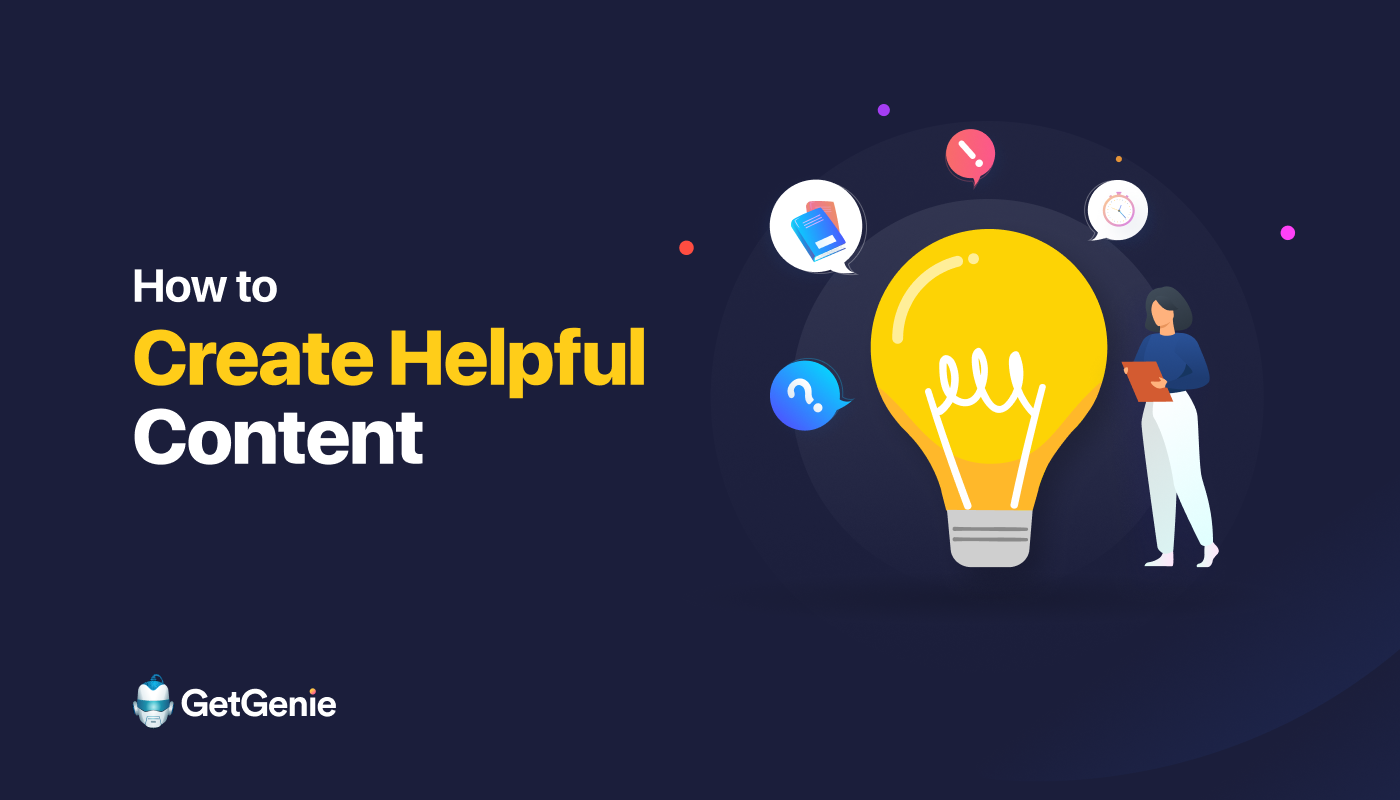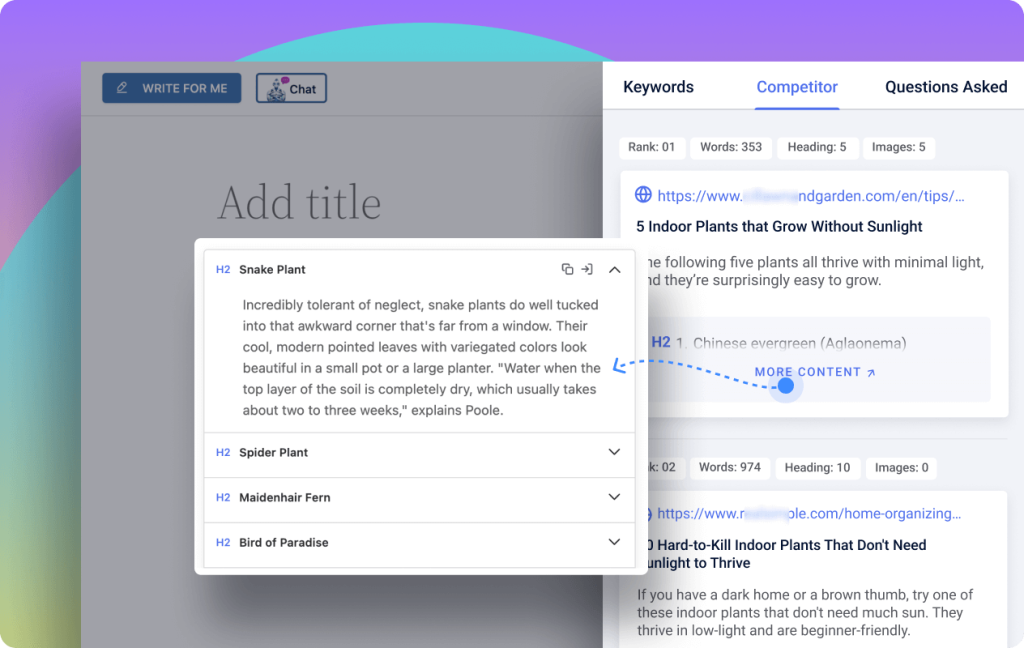How to Create Helpful Content that Sustains All Google Updates

If you want to stay ranked on the SERP and keep the rank stable, you need to create helpful content. There is no alternative to providing the best value in content than your competitors — not even high-quality backlinks.
Wondering how to create helpful content that consistently holds a better ranking position? Then this blog post is for you where I have covered everything in detail.
Why does helpful content matter?
The renowned search engine, Google, consistently emphasizes the importance of creating valuable content.
Initially, the emphasis was on content crafted by people for people, but now the focus has shifted solely to creating content for people. Numerous well-known websites experienced significant setbacks from Google due to insufficient helpful content, leading to a decline in their business.
What happened to these sites?
They suffered a loss in their businesses.
To safeguard your business from a similar fate, it is imperative to prioritize content quality.
When I mention content quality, I’m not just referring to writing tone or grammatical errors; I’m emphasizing the creation of helpful resources for readers.
If a visitor lands on a page and cannot find all the information they are seeking, the content is deemed unhelpful. Webmasters must generate content that addresses all queries in one comprehensive location.
What is helpful content according to Google?
Google consistently emphasizes a preference for content crafted for people rather than search engines. This entails prioritizing the provision of comprehensive information to aid individuals with specific queries.
Consider a scenario where you’ve selected a keyword and composed content. However, upon reading it, the searcher fails to find all the necessary information.
You might believe you’ve covered all aspects of the topic. Yet, there’s a possibility that you haven’t tailored the content to match the search intent.
For instance, if the keyword is “inverter vs non-inverter air conditioner,” individuals are likely seeking to understand the benefits of both types of AC.
If your content solely comprises a technical comparison that proves challenging for the average person to grasp, attaining the top position becomes improbable.
Conversely, someone who writes on the same subject from a standpoint of real-life experience is likely to outperform your content.
How to write a perfect piece of helpful content
Here I have mentioned the methods and strategies that you can follow to write super useful content that gains Google’s and readers’ trust.
Follow the helpful content guidelines:
Add relevant statistics
If you engage in original research, irrespective of the topic, it’s crucial to have data at your disposal. This data may come in the form of numbers and various statistics.
Incorporating such statistics into your content enhances its reliability.
However, if you consider copying statistics and data from elsewhere, that approach is not beneficial unless it’s generic content.

It’s imperative to conduct your own research, regardless of the time it may require.
This commitment to originality not only adds credibility to your content but also ensures that the information presented is accurate and relevant to your audience.
But don’t consider it super hard.
Let me provide an example….
If you are writing about various tools and their growth…
you can easily gather data from their annual reports. Alternatively, you can directly approach the tool owner, inform them that you’re writing about their tool, and request specific information.
Collect data from multiple tools, then compare them to craft your content. This will be considered original research. Incorporate numbers and statistics, and your content will perform better.
Add fresh data
In almost all industries, you will find some existing data. But what actually helps the readers? Fresh data or old data?
Yes, readers always want to know the latest updates regardless of the topic.
So, instead of relying on existing sources of information, look for fresh information. Try to search in the related journals and forums to find out what is the current trend for a topic.
Continuously adding fresh data to your content helps the readers to stay up to date. At the same time, search engines consider you as an authority as you are updating the content regularly.
Add visuals
It’s not a new idea that including visuals in content helps readers understand a topic better.
With Google’s helpful content update, this practice has become even more relevant.
Instead of just using plain text, consider adding visuals in different sections to make it more engaging.
So, what kinds of visuals can you add to written content?
You can include images, graphs, charts, videos, GIFs, and more.
However, it’s important to use only relevant visuals that make sense in the context.
For instance, if your content involves numbers and statistics, use graphical charts or infographics to present the information.
Similarly, if you’re explaining a process through written content with screenshots, consider using a GIF instead of multiple images.
Write in a conversational tone
Suppose one of your friends has asked for some help offline regarding a car issue. How would you talk to him? As a friend speaks, right?
Apply the same methods while you are writing content. Make it conversational so the reader feels comfortable.
Avoid jargon words and hard-to-understand terms.
Write like you are telling a story from your own experience. This will help reduce the bounce rate and keep the reader engaged.
Fill the information gap (competitor analysis)
If you conduct a SERP analysis for a particular topic, you will always find an information gap.
Try to identify that gap and include the missing information in your content.

It might take a while to figure out what others are missing, but with GetGenie’s SERP analysis feature, you can do it easily.
It only requires you to provide your main keyword, and GetGenie instantly provides the details of the SERP.
You can fetch details from more than 10 competitors on the SERP and read the content for each section without needing to visit a search engine or the SERP.
If you are using WordPress, you don’t even need to leave your website to find the data.
How to write Google helpful content
We’ve already talked a lot about creating helpful content, but besides this, you can be your own judge for the content. Once you are done with the writing part, read it out loud and try to convince yourself if you think it sounds helpful.
If the goal of the content is to solve a particular problem, you need to find out if it is solving the problem.
For this, seek help from someone external.
If there is an editor for the blog, ask them to share their feelings after reading the content.
Alternatively, ask someone who doesn’t know how to solve that particular problem to determine if they can solve it now after reading the blog post.
Update the content regularly
Suppose you have created super helpful content for the readers. But what happens if you don’t update the content regularly? Someone else will come to the SERP with new content that is updated.
So?
You should update your content regularly to make sure it is not losing traction. It could be data, images, videos, and more. Of course, keep tracking the Google helpful update.
However, when using helpful content AI, you must consider improving the AI-generated content and giving it a human touch then publishing it.
How to cope with new core algorithms updates?
You might put all your effort into writing the best content and helping your readers. Still, you could be in danger of losing the ranking position due to new updates.
To avoid such things, you need to cope with the new core algorithms of search engines.
Here are some strategies you can follow —
Stay educated
Make yourself educated about the search engine’ algorithms. It is not hard as Google publishes documentation after each core algorithms update.
Follow search engine guidelines
While you are trying to make helpful content, make sure you are also following all the guidelines that Google provided for webmasters.
Check the Search console data
Search Console is one of the most reliable sources to check content performance. Go through the data regularly and make changes to web pages accordingly.
Create authority
Try to build authority in your niche by staying active on different channels. Ensure a strong presence on different platforms like Twitter, LinkedIn, Facebook, Reddit, etc.
Be topically relevant
Always focus on topical relevance for topic ideation. Covering all the terms for a particular niche will help you to get better performance.
Wrapping up
It’s your turn to generate valuable content for your readers.
Prioritize content quality over quantity.
Conduct A/B testing using various methods to determine the most effective approach. After publishing new content, allow at least a month to pass before evaluating its performance.
Additionally, reconsider pages that have received almost zero impressions.

